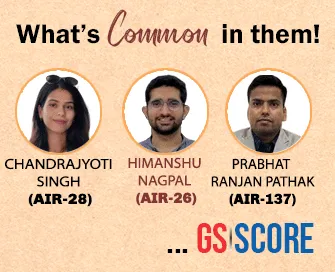

8th July 2025 (9 Topics)
Context:
Delhi is getting its fifth waste-to-energy (WTE) plant, located in Bawana, with a capacity to process 3,000 tonnes of waste daily.
Waste Segregation at Source and Waste-to-Energy in India
Solid Waste Management in India
- Definition: Solid Waste includes garbage, refuse, sludge, and other discarded materials from residential, industrial, and institutional sources.
- Key Statute: Governed by the Solid Waste Management (SWM) Rules, 2016, notified under the Environment (Protection) Act, 1986.
- Solid Waste Generation:
- India: 1,70,338 tonnes/day (CPCB 2021–22)
- Waste Treated: ~91,512 tonnes/day (~54%)
- Delhi: Generates ~11,000 MT/day; processes ~8,073 MT/day
- Improvement: Waste processing increased from 18% in FY 2014–15 to 78% in FY 2024
Waste Segregation at Source
- SWM Rules, 2016 Categories:
- Biodegradable: Organic, compostable (food scraps, paper)
- Non-Biodegradable: Recyclables and inert materials (plastics, glass, metals)
- Domestic Hazardous: Diapers, cleaning agents, napkins, e-waste, batteries
Significance:
- Prevents cross-contamination of recyclable/organic waste
- Facilitates resource recovery through composting and recycling
- Reduces burden on landfills and improves urban sanitation
- Helps in tracking hazardous waste and reduces public health risk
Waste-to-Energy (WtE) Technologies
- Provisions under SWM Rules, 2016:
- Waste ?1500 kcal/kg calorific value must be diverted to energy recovery.
- Mandatory RDF Use: Industries within 100 km of RDF plants to use 5% RDF as fuel.
Major WtE Technologies:
|
Method |
Description |
|
Incineration |
Combustion of MSW to generate heat ? steam ? electricity |
|
Gasification |
Converts organic waste to syngas using high temperatures and low oxygen |
|
Anaerobic Digestion |
Biological degradation in oxygen-free setup to produce biogas |
|
Pyrolysis |
High-temp decomposition in absence of oxygen ? bio-oil, syngas, char |
|
Fermentation |
Microbial action on biomass ? ethanol |
|
Landfill Gas Recovery |
Methane from decomposing landfills is collected for combustion energy |
Benefits:
- Reduces landfill demand and GHG emissions (methane diversion)
- Converts liability to asset (energy + materials)
- Resource recovery from metals and recyclables post-incineration
- Supports circular economy and clean energy goals
Draft SWM Rules, 2024 – Key Highlights
- Legal Backing: Proposed under Environment (Protection) Act, 1986
- Enforcement:
- Sanitation Workers authorized to impose fines for improper segregation
- Clear accountability for citizens and local bodies
- Segregation Streamlined:
- Mandatory sorting into Wet, Dry, Sanitary, and Special Care Waste
- Agricultural Waste Management:
- Bans open burning; mandates collection and storage of stubble/agri-waste
- Gram Panchayats empowered to penalize for stubble burning
Policy Linkages and Governance
- National Clean Air Programme (NCAP): WtE and stubble management linked with urban air quality goals.
- Swachh Bharat Mission 2.0: Focus on 100% segregation and waste processing.
- National Bio-Energy Programme: Promotes bio-CNG and waste-to-biogas units.
Challenges in Implementation
- Low household compliance with segregation norms
- Inadequate infrastructure for RDF plants and WtE projects
- Financial non-viability and poor operation of WtE plants in smaller towns
- Informal waste sector lacks training and safety in handling hazardous/domestic waste
- Public apathy and insufficient behavioral awareness
Way Forward
- Strengthen ULB capacities to implement SWM rules effectively
- Promote decentralized composting and biomethanation at ward-level
- Incentivize citizen participation through reward-based models
- Private Sector Participation (PPP) for sustainable WtE plants
- Strict enforcement of segregation, landfill diversion targets, and agri-waste management
- Promote Extended Producer Responsibility (EPR) to reduce packaging and plastic waste
More Articles


